Tsukuba, located in Ibaraki Prefecture, takes its name from Mount Tsukuba, famous for its double peaks. But the city is also popular for the Tsukuba Science City, Japan’s center of research and development first developed in the 1960s. Here, one can find the nation’s top research institutes and two national universities dedicated to various scientific fields such as mechanical engineering, chemical research, and robotics. Tsukuba has also provided both local and foreign governments with data on earthquake safety, environmental degradation and plant genetics among others. With a population of under 300,000, Tsukuba is home to both research facilities and sprawling nature—as well as Julius Santillan, a Filipino engineer.
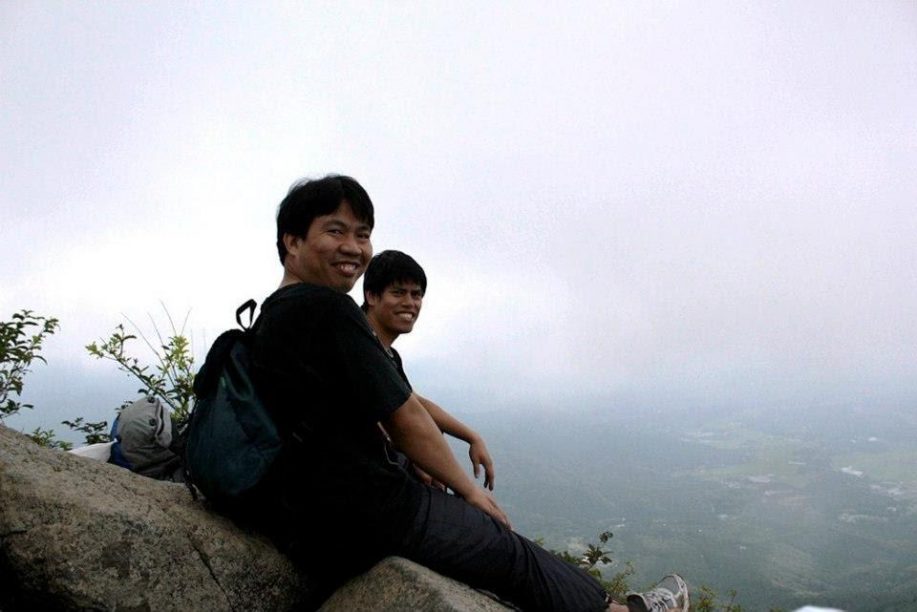 Julius and a friend at the peak of Mt. Tsukuba
Julius and a friend at the peak of Mt. Tsukuba
I was born and bred in Silay City, Negros Occidental—simple life, simple dreams. My father wanted me and my brothers to be engineers because he liked the idea of having the title “engineer” attached to our names. As the eldest of four boys, I felt obliged to fulfill his dream.
I studied at the Technological University of the Philippines (TUP)-Visayas, which had a Japanese Language Program. Our teacher, who was Filipina and studied in Japan, encouraged us to apply for a “Monbusho” Scholarship, an academic scholarship offered by the Japanese Ministry of Education, Culture, Sports, Science and Technology. So, I did and got in.
In 1998, I flew to Japan to study. Here I met Caryn, a fellow scholar and Filipino, who eventually became my wife. In a foreign land, we studied, eventually worked and raised our two sons.
 Photo of Julius featured in a Japanese newspaper
Photo of Julius featured in a Japanese newspaper
Journeying in Japan
After three years of studying in Osaka, I moved to Tokyo to work as an engineer for laser equipment used in eye surgeries among other applications. After a year and a half, I was outsourced in Tsukuba to work on semiconductors so sensitive that I had to wear a suit inside what they called the “super clean room.” This is a room with a strictly-controlled environment that keeps harmful particles (for the semiconductors) at a minimum level. Presently, I’m working for Osaka University but our research allows us to remain here in Tsukuba.
During the first few years working in Tsukuba, my family then was living near Disneyland Tokyo and I’d shuttle back and forth for work. But in 2011, the huge earthquake came and I got stranded in Tsukuba. At that time, Caryn and the kids were in the Philippines on holiday (fortunately) but we decided to relocate to Tsukuba so we could all be together whatever happened. I also thought the good distance from the sea was a plus since we’ll be away from tsunami waves—if ever.
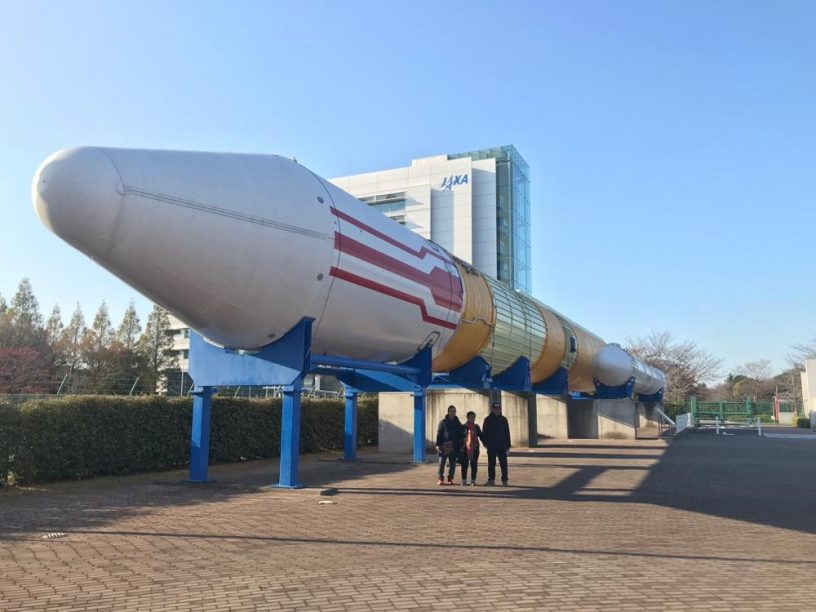 Actual rocket displayed at the Japan Aerospace Exploration Agency in Tsukuba
Actual rocket displayed at the Japan Aerospace Exploration Agency in Tsukuba
Tsukuba, City of Paradox
Walking around in Tsukuba is a bit confusing in the sense that expansive high-end laboratories are sandwiched by sprawling rice fields and vegetable farms. If you want to see a place with both farmlands and robots, this is the place.

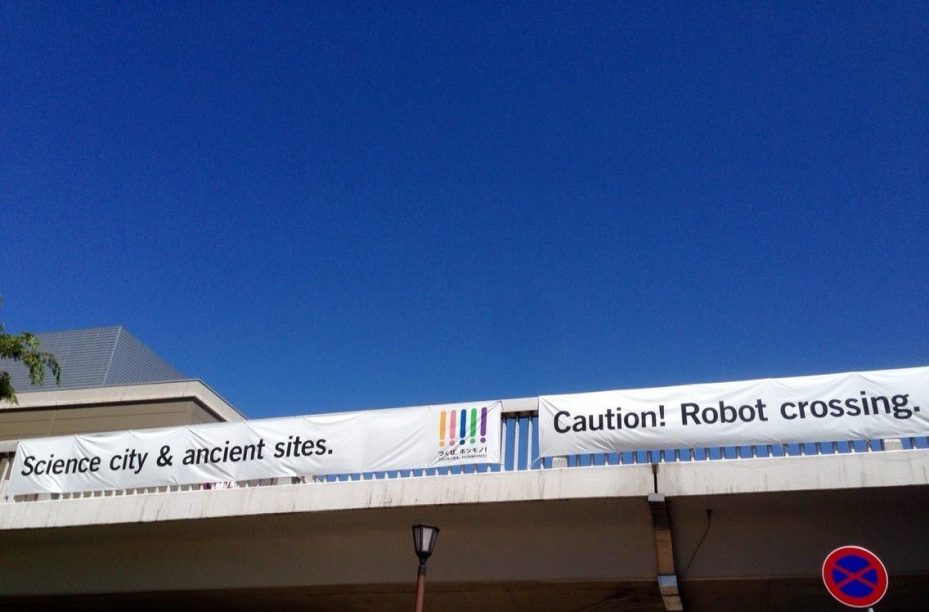 Signages in Tsukuba
Signages in Tsukuba
In this science city with so many research labs, you’ll meet a lot of PhDs (Doctors of Philosophy). Researchers from all over Japan often find work in Tsukuba, which was why the government built a direct train line from here to Tokyo. Tsukuba is a young city with well-thought out city planning. It is very family-friendly (with parks, bike roads, etc.) so it’s only natural that researchers bring their families to make their home here. As a result, more schools were put up here—high-level elementary and high schools that rank in the whole of Japan. In fact, some Tokyo residents bring their kids to Tsukuba for schooling.
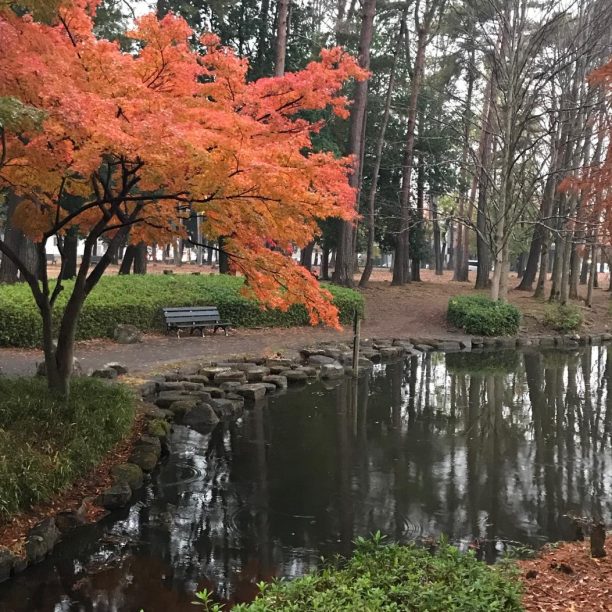 Autumn in Matsuhiro Park
Autumn in Matsuhiro Park
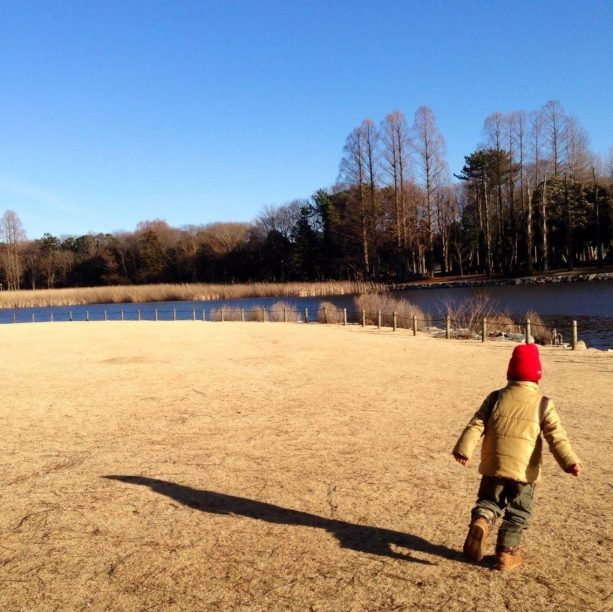 Doho Park
Doho Park
But unlike in Tokyo where supermarkets are a stone’s throw away from my apartment, I have to walk around 10 minutes to buy food—the faster way than taking the bus, which arrives only every 30 minutes. But the parks here are heaven. We’d just go down the apartment and instantly land in the park. There are so many parks here; each community has one. And most of these parks are connected by paths for pedestrians and bikes. If we want to go to the city center, it takes about 25 minutes of walking. But we pass by three parks so the kids get to play in between.
Another interesting tidbit about Tsukuba is it’s hailed as “The Pastry Capital of Japan.” In my neighborhood alone, there are around four bakeries (French, German, Danish, and a Japanese one selling baumkuchen, a traditional German cake). If you want to go on a pastry food tour, it’s best to travel by bike or car as the cafes and bakeries are far from each other. The establishments in Tsukuba, including malls, are usually huge because there’s so much space here.
 French bakeshop
French bakeshop
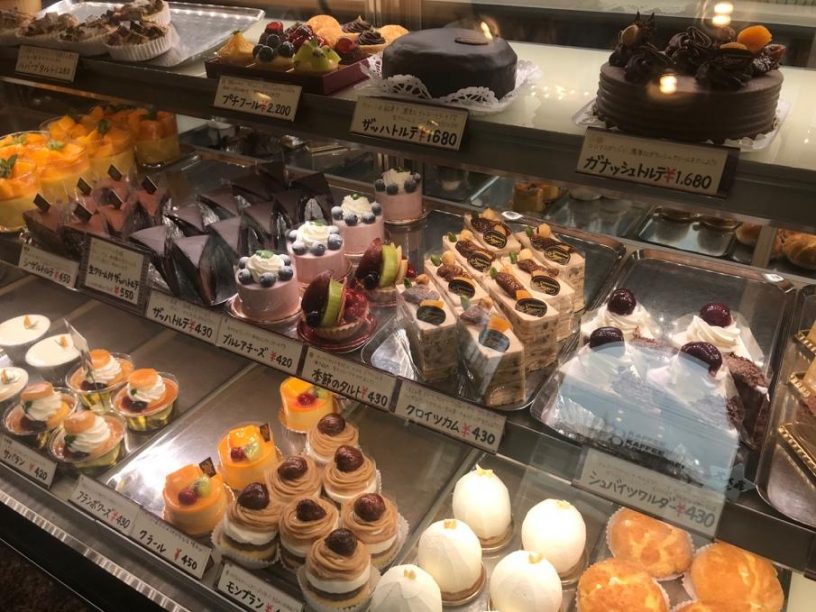 Sweet offerings
Sweet offerings
Away from Family
Caryn and my two boys moved back to the Philippines in 2016 because my eldest son needed therapy. He wasn’t responding well to Japanese teachers, but he was cooperative with his Filipino teachers. So, my wife and I decided it would be best for them to live there, and just visit me once or twice a year.
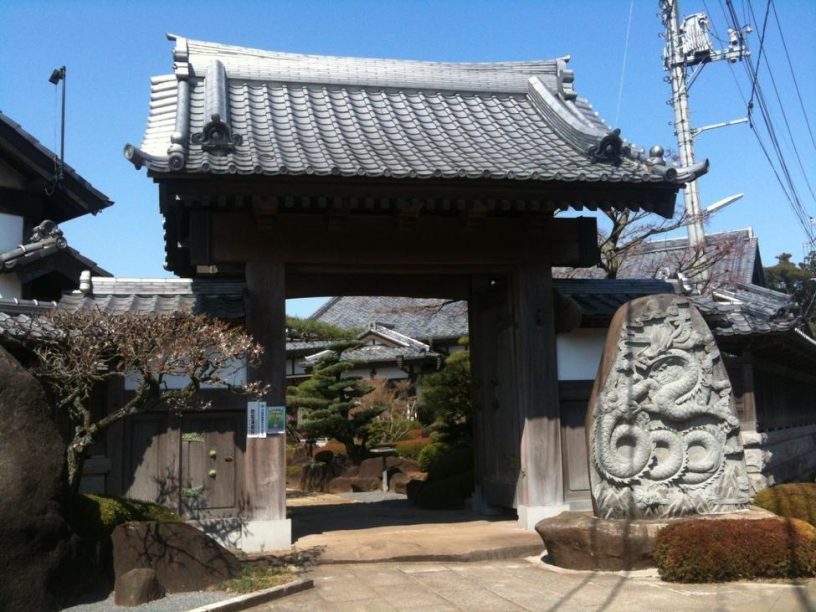 Traditional house
Traditional house
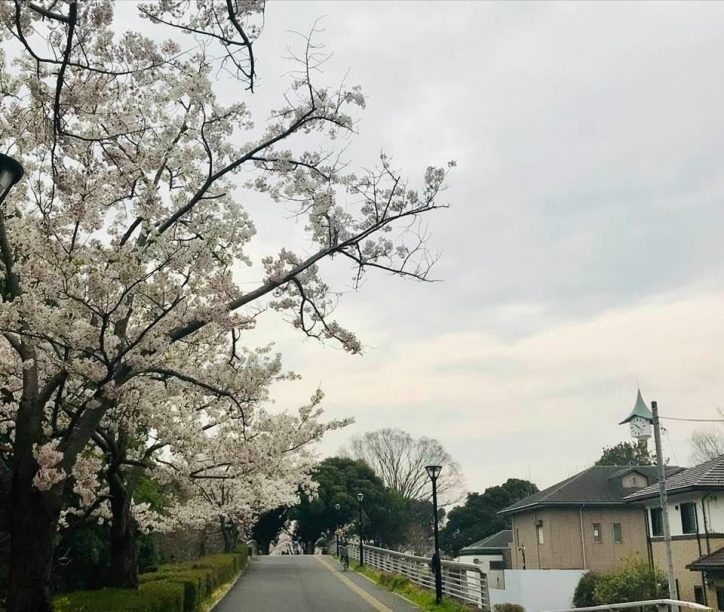 Springtime near Ninomiya Park
Springtime near Ninomiya Park
At first, it was difficult. Tsukuba is a quiet city. Around 10 pm, it’s dead silent here. No industrial noise, no construction— just the hum of electricity in the apartment. It’s so quiet, I hear the buzz of dragonflies outside my window. I can hear myself think—which was scary at first but is not so bad when I got used to it. Although sometimes, thoughts don’t let me sleep.
I try not think too much about being alone. My parents raised me to always make do with what I have. To cope, I decided to further my studies. The Tsukuba University nearby has a program that allowed me to work while studying. In a year, I completed my papers and got my PhD.
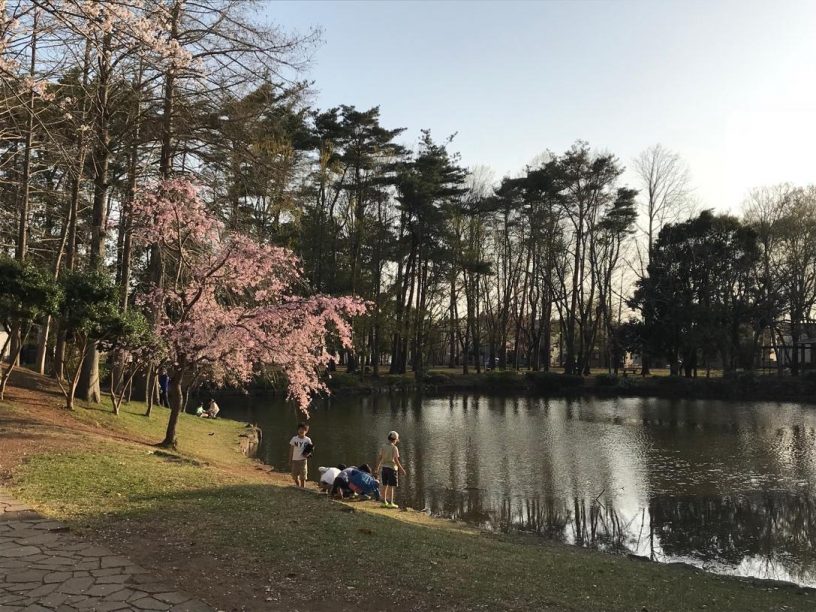 Spring in Matsushiro Park
Spring in Matsushiro Park
The parks, which were my sons’ playground, became my thinking spots. I like reflecting on my present situation and my past self, and marveling at how far I’ve gone.
I’ve also learned to cook. Before, I relied on Caryn to make all the dishes. Now, I’m getting acquainted with ingredients and spices. I’m confident enough to share my cooking when we have potluck parties with other Filipinos.
Music is also an outlet. I compose songs to express myself since I’m not the best in verbally communicating my feelings. I play the guitar, the cajon and bass. I’m also in a band with Pinoys I’ve interacted with—former students, teachers and co-volunteers at the Japanese embassy. At present, we get to collaborate through the internet.
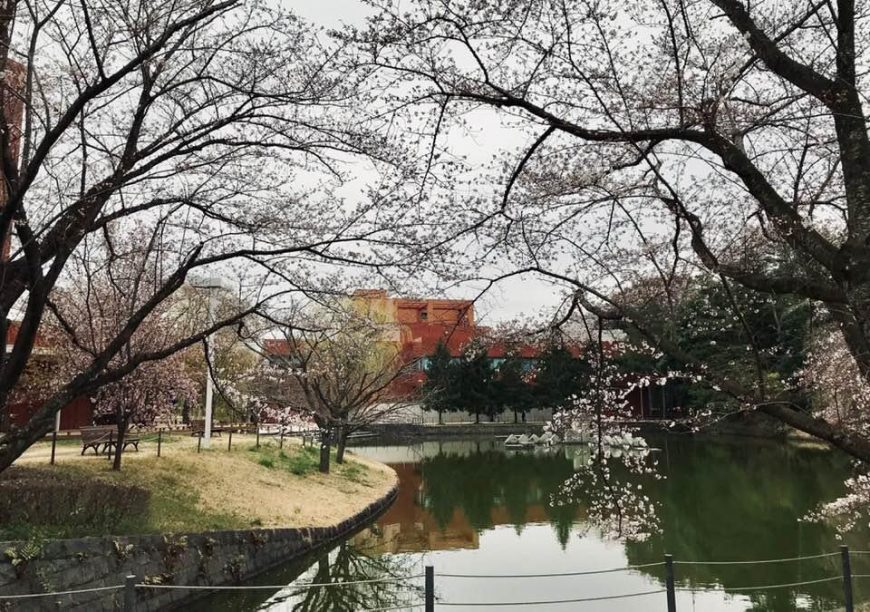 National Institute of Advanced Industrial Science
National Institute of Advanced Industrial Science
Tsukuba and the Pandemic
The pandemic impacted my already limited social life. When Caryn was here, our home was a haven for Pinoy students who wanted a piece of home. My wife would cook for them, and I’d entertain them with jokes. When my family went back to the Philippines, I maintained those friendships, but because of the pandemic, I don’t get to see our friends anymore. Now, my conversations are only with my boss, our engineer, and the people who man the supermarket and convenience store near my apartment!
Seriously though, living in Tsukuba has its advantages during the pandemic. There’s so much space here, so people can practice physical distancing without effort. It’s not like Tokyo where you have to hunch your shoulders to avoid bumping into people. Here, we have abundant personal space. You can walk for several minutes without seeing anyone (I don’t know if that’s a good thing). The parks are so huge, you’ll have no problem finding solitary spaces.
We only have a few cases but since Tsukuba is connected to Tokyo, the place with the greatest number of infections at this time, everyone is cautious. The Japanese government encourages its citizens to install a contact tracing app in their smartphones. If you spend more than 10 minutes talking to someone, your phones leave a record through Bluetooth communication. When the person you’ve talked to tests positive for COVID-19 and registers it through the app, it will contact people he’s interacted with and recommends that they also get tested.
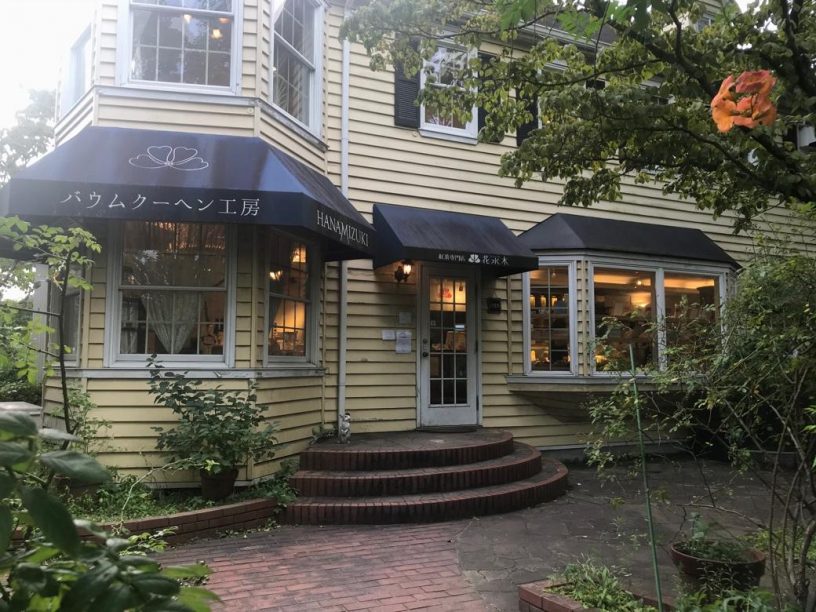 Restaurants remain open during this pandemic though takeouts are highly encouraged.
Restaurants remain open during this pandemic though takeouts are highly encouraged.
Home away from Home
After 22 years of living in Japan, I’ve fully adjusted to the culture. Though the Philippines will always be home to me, Japan has also provided me a nest that gives me comfort. There’s no more language barrier for me. Nihongo may be simple, but also very nuanced. Sometimes, the Japanese don’t say things directly. I’ve learned to read between their lines to understand what they’re not saying but saying—if you know what I mean.
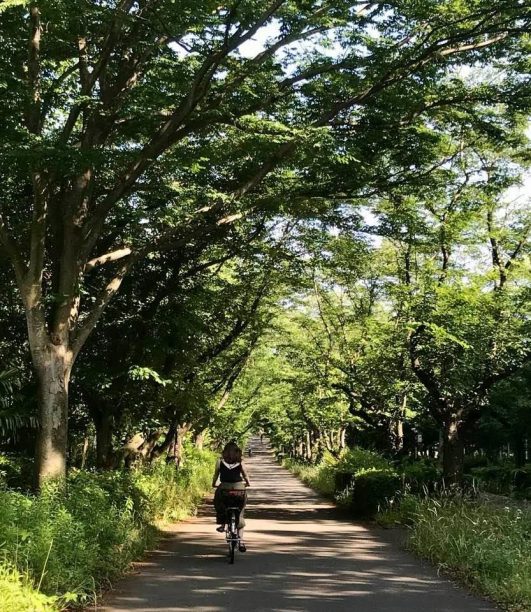 Summertime on the bike path near the Tsukuba International Conference Center
Summertime on the bike path near the Tsukuba International Conference Center
Although I’ve adjusted here, I’d still like to retire in the Philippines. It’s where my family lives, the place I’m most comfortable in.
But for now, I accept my life’s paradox, just like how Tsukuba is a city of both rural farmlands and pioneering scientific breakthroughs. In order to better provide for my family, I need to be away from them. It’s a story all overseas Filipinos share, and an unfolding story, which, I hope and believe, will end happily.

Inside the Philippine Area of Responsibility (PAR), the low-pressure area (LPA) remains almost stationary. At 4:00 AM today, the LPA was spotted at 560 kms. east of Legazpi City.
The said weather disturbance is still embedded along the intertropical convergence zone (ITCZ) currently across Visayas.
Based on PAGASA’s latest weather forecast, we can expect cloudy skies with light to moderate rains and thunderstorms over Visayas, Northern Mindanao, Zamboanga Peninsula, and the provinces of Mindoro and Palawan.
The rest of the country, including Metro Manila, will experience partly cloudy to cloudy skies with chances of thunderstorms.
Meanwhile, Tropical Storm Chan Hom is expected to intensify into typhoon category. It also has a probability of absorbing its nearest LPA.
State meteorologist Jori Loiz says it has a low chance of entering the PAR as it moves towards Southern Japan. However, it will enhance the southwest monsoon, which will bring more rains in the western side of the Philippines.
Japan- PANAHON.TV, the Philippines’ only dedicated program on weather and traffic, climate change and preparedness is covering the 3rd UN World Conference on Disaster Risk Reduction in Sendai, Japan on March 14-18, 2015.
Located 300 kilometers north of Tokyo, Sendai was one of the hard hit areas of the March 11, 2011 Great East Asian Earthquake. Multi-sector experts will be attending the conference.
The key focus of the conference is the Post-2015 Framework for Disaster Risk Reduction. There will also be a series of public forums and study tours in Sendai.
United Nations’ Secretary- General UN Secretary-General Ban Ki-moon will be meeting with Japanese Prime Minister Shinzo Abe together with leaders attending the conference.
For more information on the conference, visit: http://www.wcdrr.org/home. The hashtag: #WCDRR will also be used for the conference.

The northeast monsoon is still the dominant weather system inside the PH boundary.
Today, the islands of Batanes, Calayan and Babuyan will have partly cloudy skies with light precipitation. Meanwhile the rest of the country including Metro Manila will have favorable weather conditions, however PAGASA suggests continuous monitoring as isolated rains and thunderstorms are expected to happen within the day.
The state weather bureau is also monitoring the progress of El Nino. According to PAGASA Meteorologist Buddy Javier, the National Oceanic and Atmospheric Administration has a reported weak El Nino. However, the full details regarding the matter will be discussed today at the conference to be held at PAGASA.

March 11, 2011: The Great East Japan Quake and Tsunami
Exactly four years ago, the people of Northeast Japan experienced the darkest and longest six minutes of their lives as a 9.0 magnitude earthquake shook their homes, setting off a chain of catastrophic events that killed 15,703 people and destroyed $300 billion worth of properties.
Let us remember the key events that unfolded on those fateful days, which began on March 11, 2011.
Typhoon Vongfong, locally named Ompong, has been classified under Category 5: Super Typhoon status by the Joint Typhoon Warning Center (JTWC).
Since Typhoon Haiyan, locally known as Yolanda, Ompong is the strongest tropical cyclone to approach Asia.
In comparison, Typhoon Yolanda, which remains the strongest tropical cyclone that recently battered the country in recent history (2013), reached maximum sustained winds of 235 kilometers per hour while Ompong’s peak is at 215 kilometers per hour.

In the Philippines, no Public Storm Warning Signal has been raised as the typhoon has no direct effect on the country, aside from enhancing the Northeasterly wind flow, bringing rough to very rough sea conditions in the northern and eastern seaboards of Luzon and Visayas.
Even while maintaining its impressive maximum sustained winds for days and going nowhere near the Philippine landmass after spending hours over the sea, Ompong is not intensifying because according to PAGASA Weather Forecaster Aldczar Aurelio, cold and dry air from the higher latitudes are beginning to join in the cyclone’s circulation. Dry air is not conducive to cyclones as weather disturbances feed off warm and moist air to intensify.
Furthermore, the Japan Meteorological Agency (JMA) states that tropical cyclones are strongest when in the tropics. As they move towards the subtropical region and the temperate zone, they start to gradually weaken.
Why Ompong is slow-moving
Aurelio says there are two High Pressure Areas (HPAs) on each side of the typhoon, its ridge hampering its northward movement. When the extension of the anti-cyclone recedes, Ompong will continue its sail towards Japan.
At 13 kilometers per hour moving northward, Bagyong ‘Ompong’ is expected to leave the Philippine Area of Responsibility on Saturday.

Possible Scenarios
Currently, over open water, Ompong fails to have a major impact on the Philippines.
Over Taiwan, its southern portions, which are included in the Philippine Area of Responsibility, might experience strong winds and cloudy skies with light to moderate rains, Aurelio says.
However, Japan is another matter. While recovering from the recent cyclone Phanphone that slammed rains on Central Japan, Super Typhoon Vongfong threatens to make landfall in Japan in the following days.
According to JTWC, based on the current forecast track of Vongfong, the typhoon is moving near or over mainland Japan, which include Tokyo and other major cities. However, the typhoon may weaken considerably as it moves closer and begins to affect the country this weekend until early next week.
The strong winds of Vongfong might also batter Ryukyu Island, including Okinawa this weekend. Come Monday, effects will reach Kyushu, Shikoku and later in Honshu, including Tokyo and Osaka.
Typhoon Ompong is the 15th tropical cyclone this year, and the second this October.
The name Vongfong was contributed by Macau, China, which means wasp or putakti in Tagalog.
It has been used three times in tropical storm category in 2002 and 2008, and in typhoon category this year.

Sources: JMA, JTWC, PAGASA
Typhoon Ompong with international name Vongfong is tagged as the strongest typhoon in the world for 2014.
According to Meteorologist Jim Andrews of AccuWeather.com, “Vongfong is the strongest tropical cyclone we’ve had all year anywhere on Earth,” categorized as a super typhoon by the US Naval Observatory’s Joint Typhoon Warning Center (JTWC). Meanwhile the Japan Meteorological Agency (JMA) described its intensity from very strong to violent, with maximum winds of 215 kilometers per hour and gustiness of 250 kilometers per hour, moving towards Japan at 9 kilometers per hour.
The reason for its decrease in speed is caused by the intensity of rains it brings, and the presence of the High Pressure Area (HPA) in Japan. Still, the typhoon’s destructive winds and inundating rains are expected to hit Mainland Japan.
PH safe from Ompong
But the good news is PAGASA assured that the super typhoon will not directly affect any part of the country, and is expected to be outside the Philippine Area of Responsibility (PAR) by Saturday morning.
However, it may intensify winds from the northwest and southwest, creating wind convergence over Mindanao, where the Inter-tropical convergence zone (ITCZ) is located, which has been bringing rains over that area. Converging winds from different paths automatically create clouds that often lead to thunderstorms mostly in the afternoon or evening. This weather system may bring moderate to occasionally heavy rains.
Meanwhile, Cagayan Valley and the Cordillera Administrative Region (CAR) will also experience light to moderate rains brought by northeast monsoon or the amihan.
Transition Period
During this period, the transition of winds from southwest to northeast is still happening. This is the reason why PAGASA has yet to officially declare the amihan season, associated with dry and cold air, because of the lingering presence of the weak southwest monsoon or habagat, associated with humid and warm air.



Sources: PAGASA | JTWC | JMA | NOAA | AccuWeather.com


